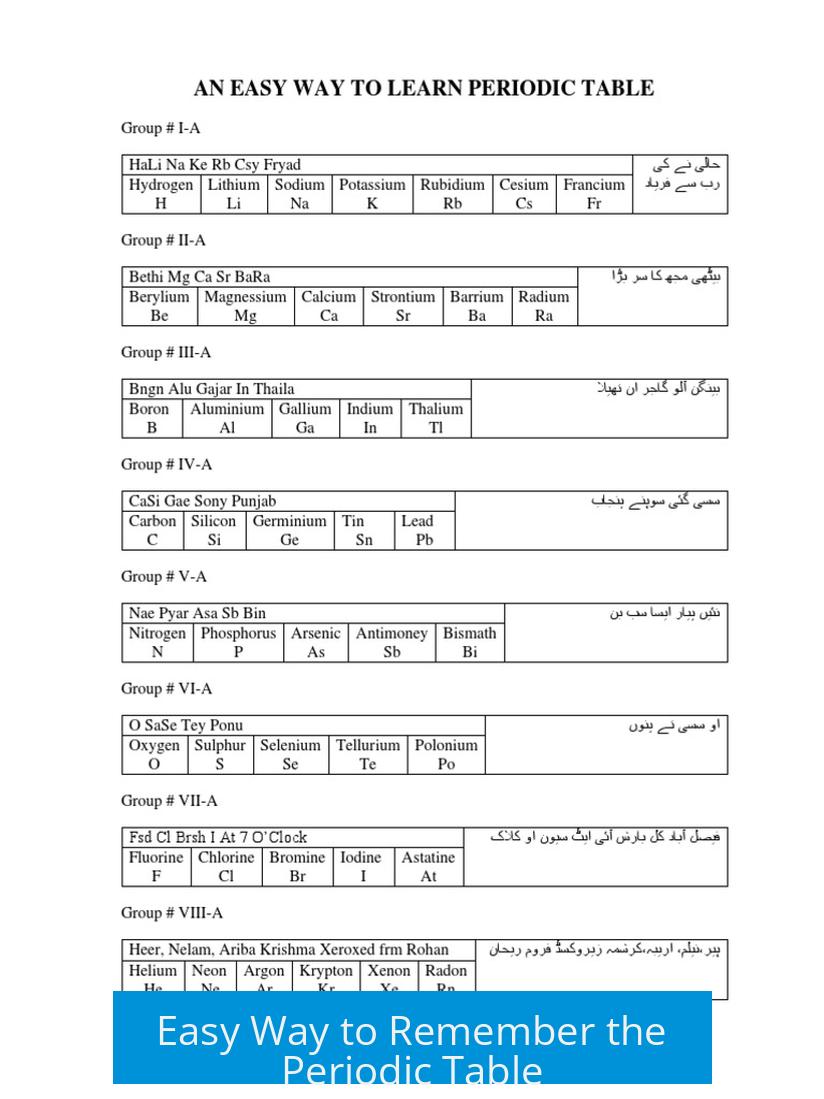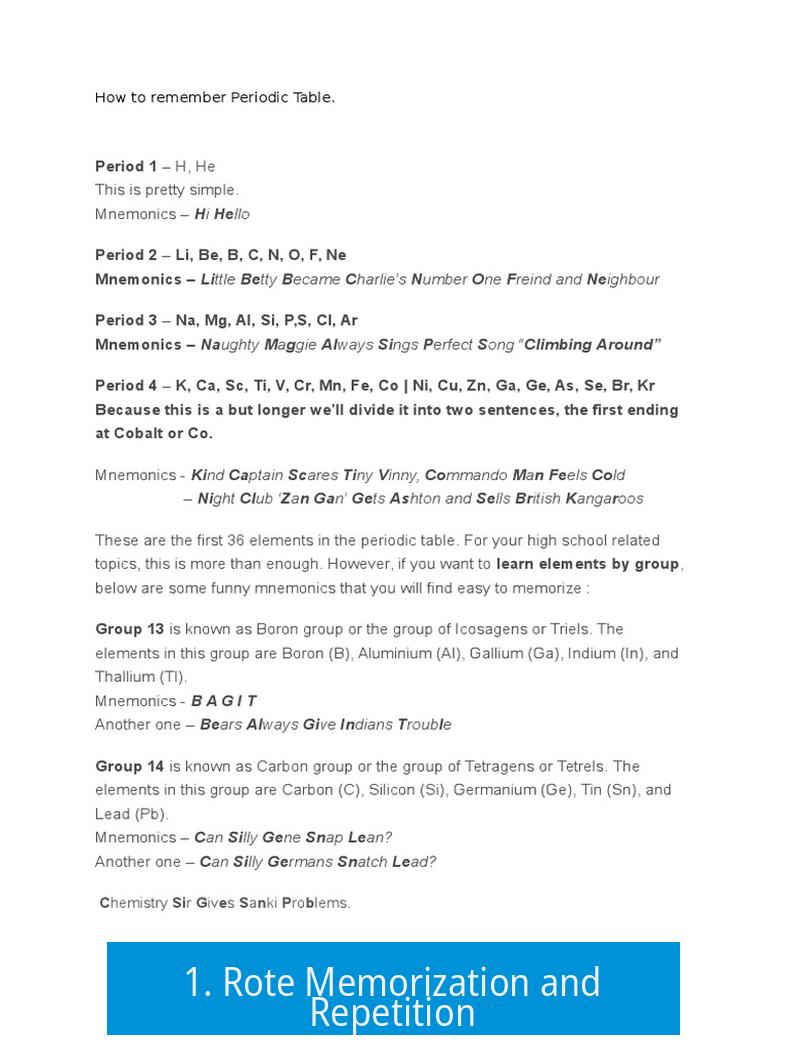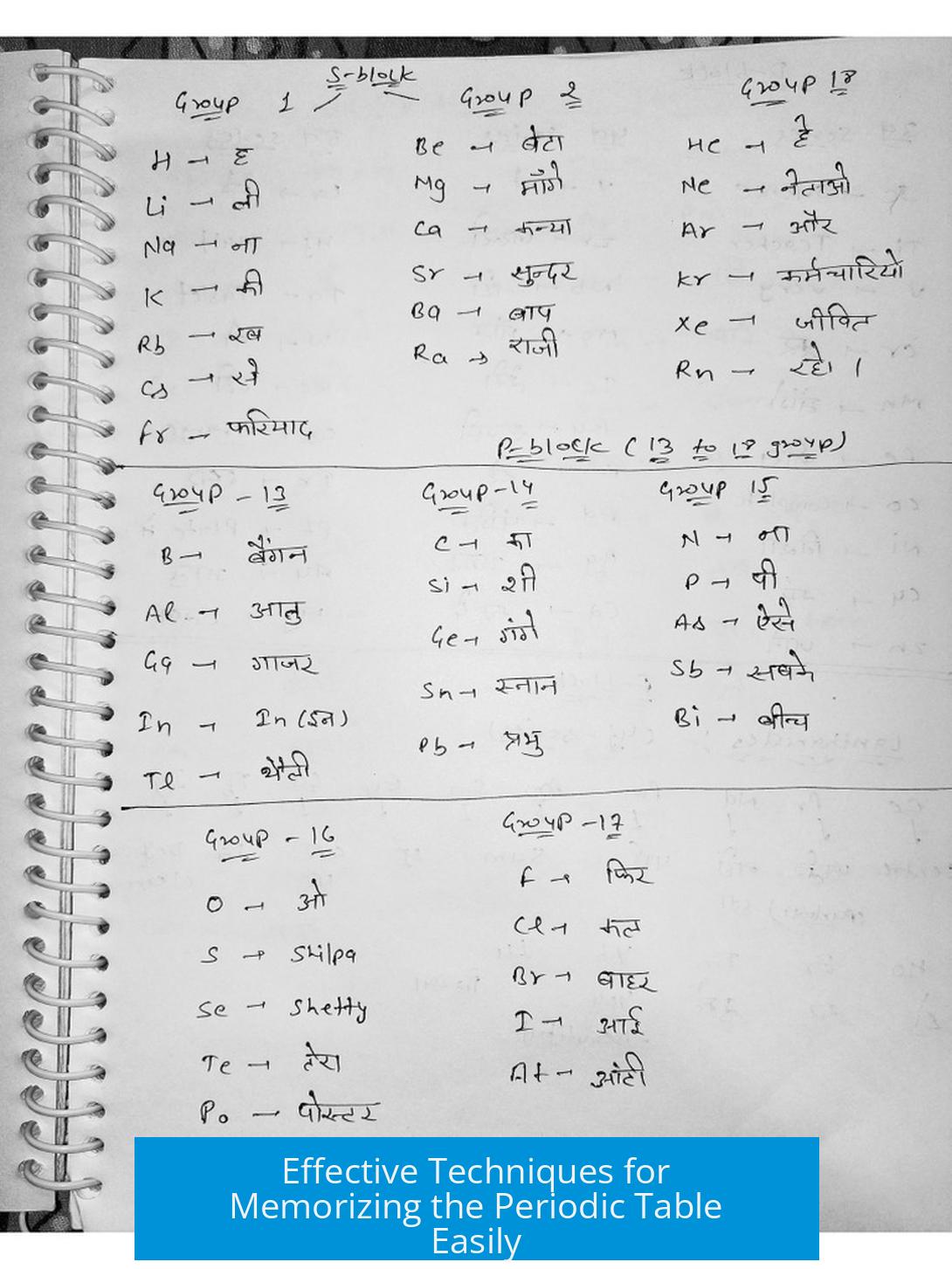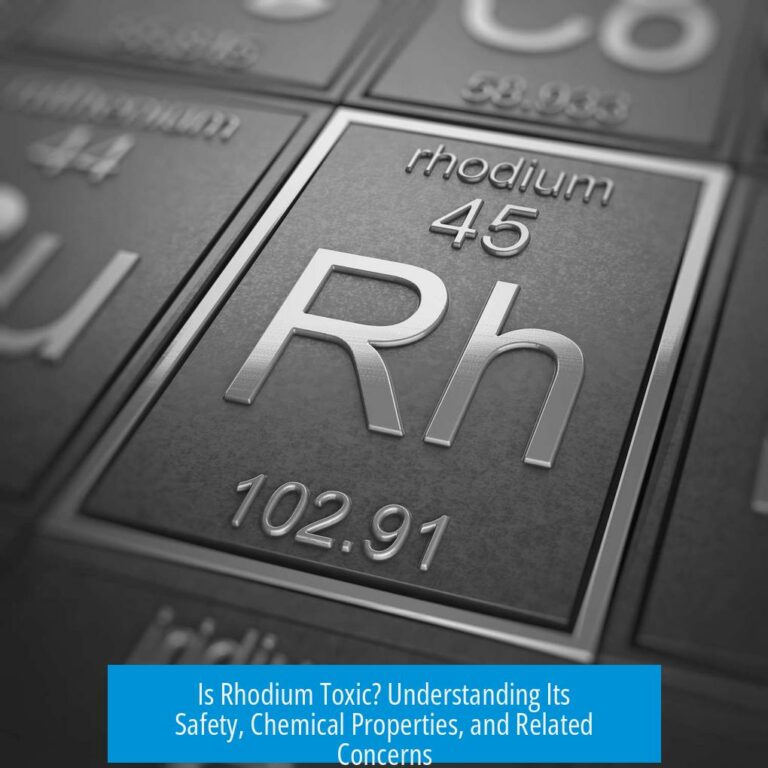Easy Way to Remember the Periodic Table

Memorizing the periodic table is often seen as unnecessary because it mainly serves as a reference tool. Most educational settings provide the table during exams, making memorization less critical than understanding its layout and trends. However, for those who want or need to memorize it, several techniques can assist with this task.
General Perspective on Memorization
The periodic table’s purpose is to organize elements clearly for quick reference. Many experts argue against memorizing it entirely. Since exams usually provide a periodic table, memorization does not offer a significant advantage. Instead, focusing on understanding chemical properties or periodic trends is more useful for chemistry studies.
- Many students find outright memorization overwhelming and unproductive.
- Teachers emphasize using the table as a reference, not a memorization task.
- Memorizing the entire table is rare in official exams.
Techniques for Memorizing the Periodic Table
Despite general advice against memorization, some students prefer learning the elements explicitly. Several practical approaches can make this easier.
1. Rote Memorization and Repetition

Writing out parts of the table repeatedly aids memory retention. Daily practice of writing element names, symbols, or atomic numbers can gradually cement information.
- Practice writing the table several times.
- Fill blank tables with element names and numbers repeatedly.
- Start with smaller parts, like the first 20 elements, before progressing.
2. Break the Table into Manageable Groups
Dividing the periodic table into smaller sections or groups reduces memorization load. Students can tackle each group individually, such as alkali metals, noble gases, or transition metals.
- Learn one group at a time to focus your efforts.
- Understand group characteristics to form mental associations.
- Gradually compile groups into a complete table in your mind.
3. Use Mnemonics and Memory Aids
Creating mnemonic phrases can help recall sequences of elements, especially for groups in order. For example, using the first letters of element symbols to form words or sentences helps encode information in a memorable way.
Example mnemonic for the alkali metals group: “Hell – He, Likes – Li, No – Na, King – K, Ruling – Rb, Central – Cs, France – Fr”
- Make sentences or phrases where each word starts with an element’s symbol letter.
- Humor or vivid imagery in mnemonics improve retention.
- Customize mnemonics to fit personal memories or interests.
4. Create Songs or Rhythms
Setting element names or symbols to music or rhythmic patterns can enhance memory through melody. Popular educational songs, like the Asap Science periodic table song, are examples.
- Sing or recite elements regularly in tune or rhythm.
- Use music as a daily reinforcement tool.
- Compose your own song tailored to your preferred order.
5. Associate Elements with Properties
Linking elements to their chemical or physical traits helps anchor memory. Understanding that carbon and silicon both have four valence electrons and their positions relative to nitrogen aids memorization.
- Learn periodic trends like valence electrons and atomic radius.
- Connect element position with its behavior or applications.
- Use role-based understanding, such as metals, nonmetals, or metalloids.
Criticism and Alternatives to Memorization
Experts suggest that memorizing trends, group characteristics, and periodic relationships is more beneficial than rote learning the entire table. This deep knowledge empowers practical chemistry problem-solving instead of recalling isolated facts.
- Focus on periodic trends: electronegativity, atomic size, ionization energy.
- Prioritize learning how elements interact and their typical compounds.
- Memorize atomic numbers of common or important elements rather than all.
Additional Suggestions and Humor
Some unconventional tips exist, including tattooing the table on your arm or relying humorously on “one simple hack” to memorize it instantly. While not practical, they highlight the challenges students face in memorizing such a large dataset.
Summary of Practical Advice
| Method | Description | Benefit |
|---|---|---|
| Rote Repetition | Writing elements repeatedly | Strengthens recall through practice |
| Group Study | Learning elements by groups | Reduces complexity and increases focus |
| Mnemonics | Using phrases or acronyms | Creates easy-to-remember cues |
| Songs/Rhythm | Musical memory aids | Enhances memorization via melody |
| Property Associations | Linking elements to traits | Promotes deep understanding |
Key Takeaways
- The periodic table is mainly a reference tool; memorization is not essential.
- Schools often provide the table in exams, limiting the need to memorize it.
- Breaking the table into groups helps reduce memorization difficulty.
- Mnemonics, songs, and property associations offer effective memory aids.
- Understanding periodic trends improves chemistry skills more than pure memorization.
How can mnemonics help in remembering the periodic table?
Mnemonics create easy-to-remember sentences using the first letters of element symbols. For example, a sentence where each word starts with the symbol of an element helps recall the order quickly.
Is it necessary to memorize the entire periodic table for exams?
Most schools provide a periodic table during exams. Memorizing it completely is usually not required. Focus more on understanding trends and key element groups instead.
What is a practical way to start memorizing parts of the periodic table?
Break the table into smaller groups and memorize one group at a time. This reduces overload and helps with gradual learning.
Why might rote memorization be less effective than understanding element properties?
Memorizing atomic numbers alone doesn’t help much. Knowing chemical or physical properties and trends improves your use of the table.
Can music or songs aid in learning the periodic table?
Yes, creating or listening to songs about the elements can make memorization easier by adding rhythm and repetition.





Leave a Comment